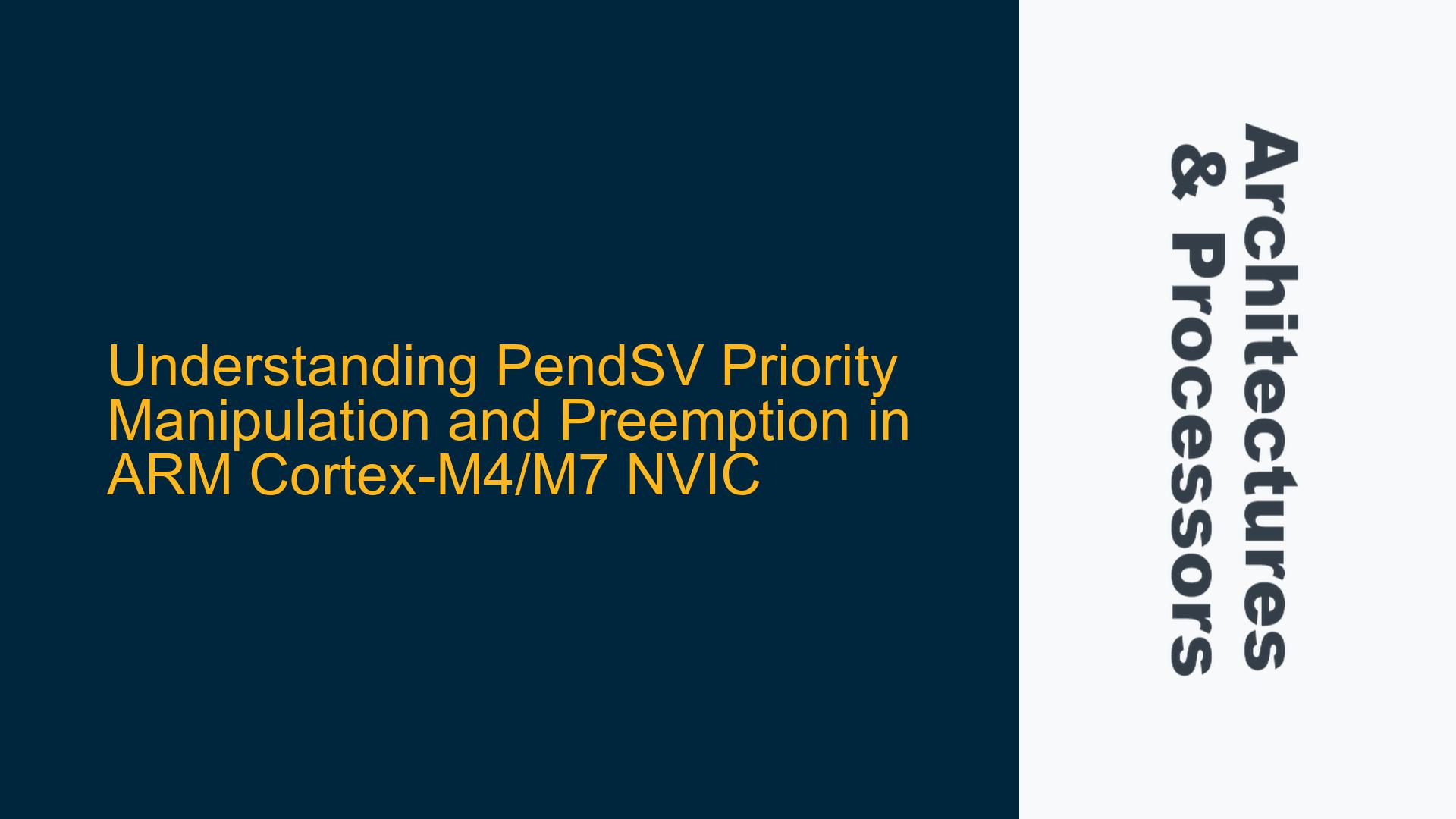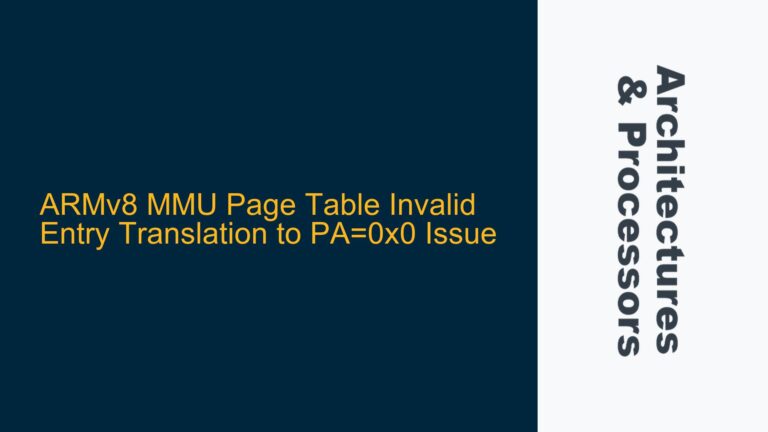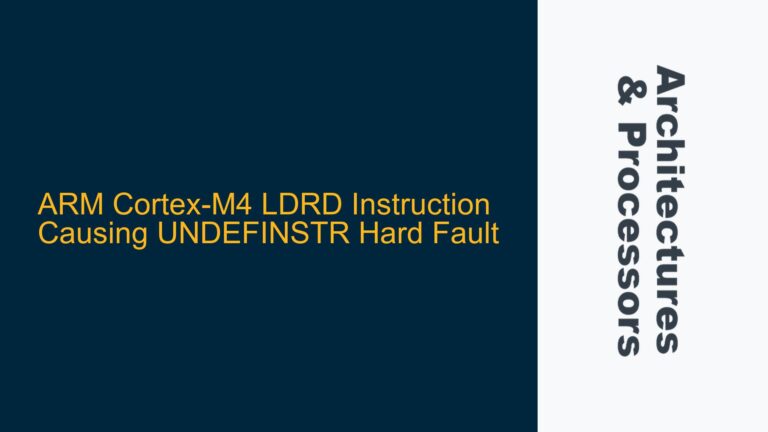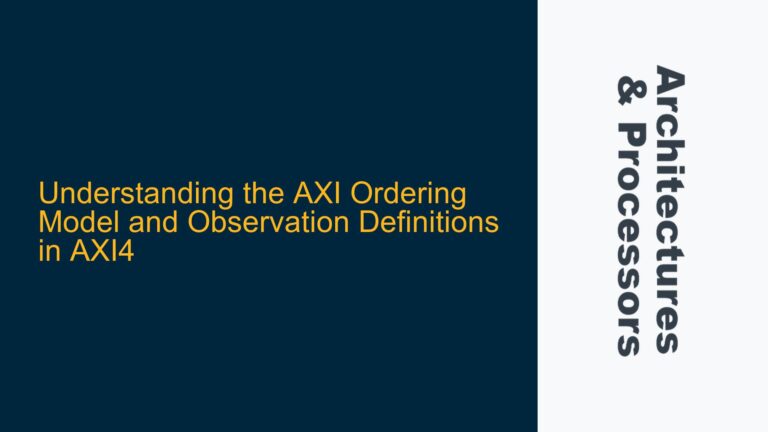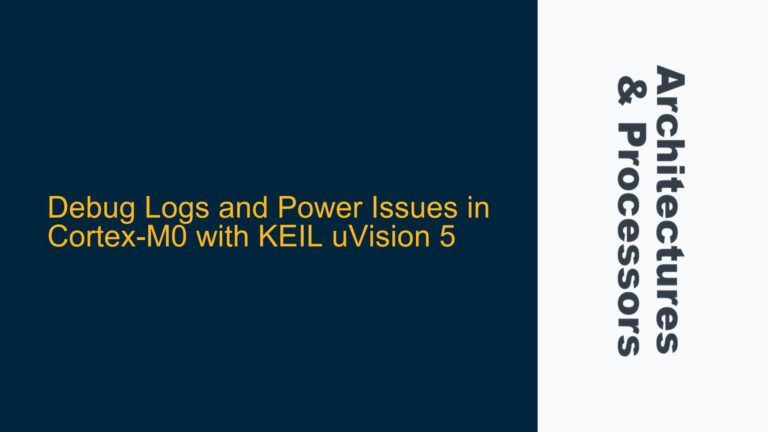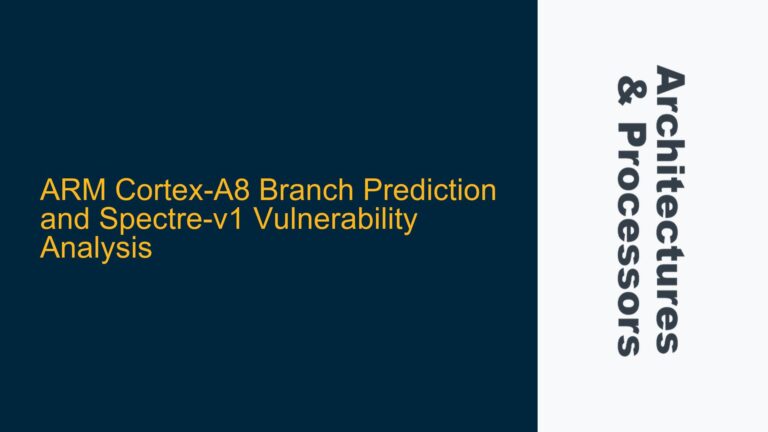PendSV Preemption Behavior During Priority Adjustment in High-Priority ISRs
The behavior of the PendSV (Pendable Service Call) exception in ARM Cortex-M4 and Cortex-M7 processors when its priority is dynamically adjusted within a high-priority Interrupt Service Routine (ISR) is a nuanced topic. This scenario arises when a high-priority ISR triggers a PendSV exception, sets it to pending, and then attempts to raise its priority above the currently executing ISR. The key question is whether PendSV will preempt the current ISR immediately due to its new higher priority and pending status.
In the ARM Cortex-M architecture, exceptions and interrupts are managed by the Nested Vectored Interrupt Controller (NVIC). The NVIC supports dynamic priority adjustment, but the interaction between pending exceptions, priority levels, and preemption rules can lead to unexpected behavior if not carefully handled. Specifically, when PendSV is pending and its priority is raised above the currently executing ISR, the processor must evaluate whether preemption is allowed based on the ARMv7-M architecture’s rules.
The ARMv7-M architecture defines strict rules for exception preemption. When an exception is pending, its priority is compared against the current execution priority. If the pending exception has a higher logical priority (lower numerical value), it will preempt the currently executing exception. However, if the priority of the pending exception is dynamically raised while the current ISR is executing, the processor must re-evaluate the preemption condition. This re-evaluation is not instantaneous and depends on the timing of the priority adjustment relative to the exception handling mechanism.
In the case of PendSV, which is typically used for context switching in real-time operating systems (RTOS), its priority is often set lower than other high-priority interrupts to ensure that it does not disrupt time-critical tasks. However, if a high-priority ISR raises PendSV’s priority above its own, the processor must determine whether PendSV can preempt the ISR immediately. This behavior is critical for ensuring deterministic system performance and avoiding priority inversion or deadlock scenarios.
HardFault Risks Due to Priority Inversion During PendSV Execution
A more complex scenario occurs when PendSV is already executing, and a higher-priority interrupt preempts it. If the higher-priority ISR attempts to raise PendSV’s priority above its own, the system may enter a state that violates the ARMv7-M architecture’s preemption rules, potentially leading to a HardFault exception.
The ARMv7-M Architecture Reference Manual explicitly states that reducing the priority of the current exception handler (or attempting to invert the priority of preempted exceptions) can cause undefined behavior. In this case, if a higher-priority ISR preempts PendSV and then raises PendSV’s priority above its own, the processor may detect a priority inversion scenario. This inversion occurs because the preempted PendSV exception would now have a higher logical priority than the ISR that preempted it, which is not allowed by the architecture.
The reference manual highlights that the execution priority of the processor only falls to the priority of the highest-priority preempted exception when the current exception’s priority is reduced. This means that lowering the priority of the current ISR does not allow preempted exceptions to regain control unless their priority is higher than the new execution priority. Attempting to raise PendSV’s priority above the preempting ISR effectively inverts the priority hierarchy, leading to a HardFault.
This behavior is particularly relevant in systems where PendSV is used for deferred processing or context switching. If a high-priority ISR attempts to manipulate PendSV’s priority dynamically, it must ensure that the new priority does not violate the architecture’s preemption rules. Failure to adhere to these rules can result in system instability or catastrophic failures.
Implementing Safe Priority Adjustment and Preemption Handling for PendSV
To avoid the pitfalls associated with dynamic priority adjustment of PendSV, developers must follow a set of best practices and adhere to the ARMv7-M architecture’s guidelines. These practices include careful management of exception priorities, proper use of memory barriers, and thorough testing to ensure deterministic behavior.
First, developers should avoid dynamically raising PendSV’s priority above the currently executing ISR unless absolutely necessary. If such a scenario is required, the system must ensure that the priority adjustment does not violate the preemption rules. This can be achieved by temporarily disabling interrupts, adjusting the priority, and then re-enabling interrupts. However, this approach must be used judiciously to avoid introducing excessive latency or missing critical interrupts.
Second, when PendSV is preempted by a higher-priority ISR, the ISR should not attempt to raise PendSV’s priority above its own. Instead, the ISR should defer any priority adjustments until after it has completed its execution. This ensures that the preemption hierarchy remains intact and prevents priority inversion scenarios.
Third, developers should thoroughly test their exception handling logic to identify any edge cases that could lead to undefined behavior. This includes testing scenarios where PendSV is preempted, its priority is adjusted dynamically, and multiple exceptions are pending simultaneously. Automated testing frameworks and hardware-in-the-loop (HIL) simulations can be invaluable for uncovering subtle issues.
Finally, developers should consult the ARMv7-M Architecture Reference Manual for detailed guidance on exception handling and priority management. The manual provides comprehensive information on the behavior of the NVIC, the rules for exception preemption, and the potential pitfalls associated with dynamic priority adjustment. By adhering to these guidelines and implementing robust exception handling logic, developers can ensure reliable and deterministic system performance.
In summary, the dynamic adjustment of PendSV’s priority within high-priority ISRs requires careful consideration of the ARMv7-M architecture’s preemption rules. Developers must avoid priority inversion scenarios, implement safe priority adjustment mechanisms, and thoroughly test their systems to ensure compliance with the architecture’s guidelines. By following these best practices, they can avoid HardFault exceptions and ensure reliable operation of their embedded systems.
